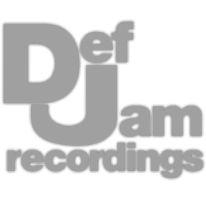Professional Analog Mastering.
Professional Analog Mastering.










When mixing vocals with a beat, we’ll either want to separate the two or blend the two more. To separate them we can boost frequencies on the vocal and cut those same frequencies on the beat, or maybe introduce even harmonics on the beat, and odd on the vocal.
The chapters in this video are in no particular order but can be combined to augment one another.
When we’re mixing a vocal and a beat, without control of the individual tracks other than the stereo instrumental and vocal, it often helps to separate the two. To do this we’ll place an EQ on both tracks and emphasize the vocals while cutting the beat at the same frequencies.
For example, I can boost 2.5kHz on the vocal by 1.5dB but dip it by the same amount on the beat. Let’s take a listen to this and notice how the effect separates the vocal from the beat.
To make the vocal be dynamically separated from the beat, we can place a compressor on the instrumental and set the external side chain as the lead vocal. Now the beat will be attenuated whenever the vocal is present - but be sure to achieve only 1dB of attenuation at most.
Additionally use a release time of 50ms to return the beat to unity quickly without distorting its low frequencies. We can also control which frequencies of the vocal trigger the compression, with the mids being a good option.
Let’s take a listen and pay attention to how this compression carves out some room for the vocal.
If you have the FF Pro-Q 3, we can use an interesting trick to boost the vocal. We’ll place the EQ on the vocal, then set the beat as the external side-chain; next, create a dynamic band at 2kHz, and an additive air-shelf.
If we click on the band, then auto, then the external side-chain icon, the band or bands will be boosted whenever that frequency of the beat is loud enough. As a result, frequencies of the vocal that would’ve been masked by the beat will now be present.
Let’s listen to the song, and notice how the vocal becomes clearer and more present.
Next, I want to try reducing resonance frequencies on the instrumental, using the vocal as the trigger for the dynamic processing. I’ll use Soothe 2 on the beat, and set the vocal as the external side-chain, then I’ll use very subtle settings to dynamically reduce various frequencies.
This should help attenuate the beat depending on the vocal’s frequencies, in turn making it stick out. Let’s listen to the effect and notice how the vocal moves forward while the track’s mids move back a little.
For this trick, I’m going to place tube distortion on my beat, and tape distortion or saturation on my vocal. The idea is that the odd harmonics of the tape distortion and the even of the tube won’t overlap while both are made to sound fuller.
Similar to chapter one, we’re basically using varied frequency responses to separate the two signals. Let’s listen and notice how they both sound fuller, and a little more distinct from one another.
Next, I’ll try two different reverb lengths, both of which will be in time with the BPM of the track. I’ll use a very short reverb on the vocals to create a doubling effect, and then use a very subtle reverb 4 times its length on the beat.
Like the tape and tube saturation in the previous chapter, this will make them both sound fuller, but, will keep them distinct due to the different timings.
Let’s listen and again notice how they both sound fuller, yet more distinct.
Like the first chapter, we can boost parts of the vocal but attenuate them on the instrumental - in addition to this we can make the boost on the vocal in the mid image, and the beat’s dip on the side image. This will reduce masking and focus the stereo image.
Let’s take a listen and notice how the beat sits back a little, while the vocal comes forward, and the overall sounds become more centered.
Contrary to a lot of our earlier chapters, we may want the vocal and beat to blend more and feel more cohesive - to accomplish this, I’ll use a mid-side compressor and place it on the mixbus. The mids will be compressed more than the sides, causing dynamic stereo expansion.
Furthermore, the majority of the vocal and the beat’s mid image will be compressed together, causing a cohesive and uniform sound between the two. Let’s listen and notice how the two signals glue together.
For this last trick, I’m going to try something unique - first I’ll send both the vocal and beat to parallel tracks, then place low-latency linear phase EQs on both. For the beat, I’ll isolate the mid to low frequencies using a low-pass filter.
Then I’ll do the opposite to the vocal’s bus by using a high-pass filter. Next, I’ll place upward compressors on both, compressing from the noise floor up, and then blend these busses in with the original signals.
What this does is increase detail in both the vocal and the beat, but using different ranges. This way the two combine to create a really full sound but still sound distinct.
Let’s take a listen and notice how the sends fill out the mix.